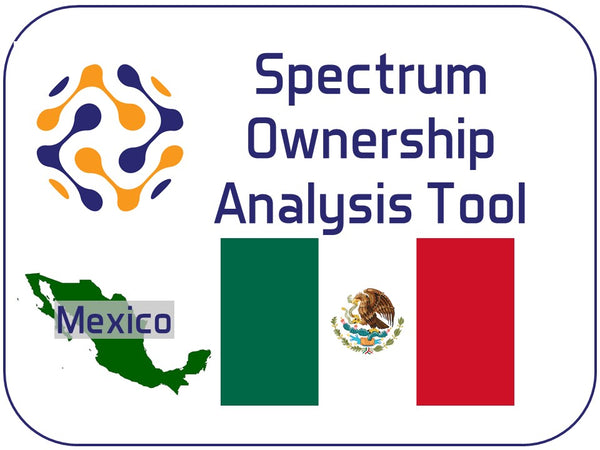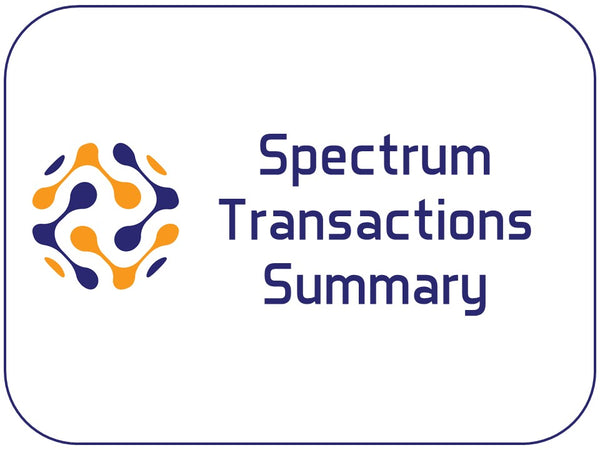Today, the FCC approved a Channel 51 transition in Bend, OR. The movement of this TV station from Channel 51 to Channel 18, will eliminate the adjacent channel interference risk to USCellular's 700MHz A-Block spectrum in Eugene, OR and T-Mobile's A-Block spectrum in Linn, Deschutes, and Lake counties. It eliminates interference concerns across a total of 7 counties with a total population of 709,258. Below is a listing of the currently filed Channel 51 transitions. Each of the Daily Digest dates is linked to the filed information.
| Final Daily Digest
| Initial Daily Digest
| Market
| Call Sign
| Current Channel
| Proposed Channel
|
|
| Oklahoma City, OK
| KSBI(TV)
| 51
| 23
|
|
| Rome, GA
| WPXA(TV)
| 51
| 31
|
|
| Kansas City, MO
| KPXE-TV
| 51
| 30
|
|
|
| Dayton, OH
| WKEF(TV)
| 51
| 18
|
|
|
| Denver, CO
| KCEC(TV)
| 51
| 26
|
|
| Longview, TX
| KCEB
| 51
| 26
|
|
|
| Lansing, MI
| WLAJ-TV
| 51
| 25
|
|
|
| Bend, OR
| KOHD
| 51
| 18
|
|
| Providence, RI
| WJAR(TV)
| 51
| 50
|
Yesterday, the FCC accepted a Channel 51 transition in Providence, RI. The movement of this TV station from Channel 51 to Channel 50, will eliminate the adjacent channel interference risk to T-Mobile's 700MHz A-Block spectrum in Boston, MA. It eliminates interference concerns across 22 counties with a total population of 8,228,649 Below is a listing of the currently filed Channel 51 transitions. Each of the Daily Digest dates is linked to the filed information.
Below are the markets, states, and counties affected by the Providence (RI) Channel 51 interference:
AllNet's Spectrum Ownership Analysis Tool has incorporated the Channel 51 interference issue into our Spectrum Grid module. From this module, you can see the 700MHz A-Block owner and an indication of whether Channel 51 is licensed in that particular county. Green highlights over the Channel 51 call sign indicate that a transition plan has been approved, yellow highlights indicate that a transition plan has been filed, and red highlights indicate the markets where interference issues will persist.
Yesterday, the FCC approved a Channel 51 transition in Bend, OR. The movement of this TV station from Channel 51 to Channel 18, will eliminate the adjacent channel interference risk to T-Mobile's 700MHz A-Block spectrum in rural Oregon. It eliminates interference concerns across 7 counties with a total population of 709,258 Below is a listing of the currently filed Channel 51 transitions. Each of the Daily Digest dates is linked to the filed information.
AllNet's Spectrum Ownership Analysis Tool has incorporated the Channel 51 interference issue into our Spectrum Grid module. From this module, you can see the 700MHz A-Block owner and an indication of whether Channel 51 is licensed in that particular county. Green highlights over the Channel 51 call sign indicate that a transition plan has been approved, yellow highlights indicate that a transition plan has been filed, and red highlights indicate the markets where interference issues will persist.
Yesterday, the FCC approved a Channel 51 transition in Dayton, OH. The movement of this TV station from Channel 51 to Channel 18, will eliminate the adjacent channel interference risk to T-Mobile's 700MHz A-Block spectrum in Denver. Below is a listing of the currently filed Channel 51 transitions. The Dayton, OH transition is linked to the FCC filings. The previous filings are linked in previous postings. Previous postings can be accessed the the Channel 51 label.
Our Spectrum Ownership Analysis Tool has incorporated the Channel 51 interference issue into our Spectrum Grid module. From this module, you can see the 700MHz A-Block owner and an indication of whether Channel 51 is licensed in that particular county. Green highlights over the Channel 51 callsign indicate that a transition plan has been approved, yellow highlights indicate that a transition plan has been filed, and red highlights indicate the markets where interference issues will persist.

Yesterday, the FCC approved a Channel 51 transition in Denver, CO. The movement of this TV station from Channel 51 to Channel 26, will eliminate the adjacent channel interference risk to T-Mobile's 700MHz A-Block spectrum in Denver. Below is a listing of the currently filed Channel 51 transitions. Each of the Daily Digest dates is linked to the filed information.
| Final Daily Digest | Initial Daily Digest | Market
| Call Sign | Current Channel | Proposed Channel |
| 12/13/2013 | Oklahoma City, OK | KSBI(TV) | 51 | 23 |
| 9/4/2014 | Rome, GA | WPXA(TV) | 51 | 31 |
| 9/4/2014 | Kansas City, MO | KPXE-TV | 51 | 30 |
| 9/18/2014 | Dayton, OH | WKEF(TV) | 51 | 18 |
| 12/16/2014 | 10/17/2014 | Denver, CO | KCEC(TV) | 51 | 26 |
| 12/8/2014 | Longview, TX | KCEB | 51 | 26 |
Our Spectrum Ownership Analysis Tool has incorporated the Channel 51 interference issue into our Spectrum Grid module. From this module, you can see the 700MHz A-Block owner and an indication of whether Channel 51 is licensed in that particular county. Green highlights over the Channel 51 callsign indicate that a transition plan has been approved, yellow highlights indicate that a transition plan has been filed, and red highlights indicate the markets where interference issues will persist.
Here is the first channel sharing agreement where spectrum will be sold back to the FCC as part of the 600MHz Broadcast Incentive Auction.
Los Angeles KCET/KLCSIt is interesting to note that neither of the stations involved is operating a for profit business. KCET indicates that 2 million Southern Californians watch weekly. Their broadcast footprint covers over 17 million people in Los Angeles, Orange, Riverside, San Bernardino, Ventura, Kern, and San Diego counties. KLCS is a non-commercial educational channel directly supporting the 700,000 students within the Los Angeles Unified School District. Both broadcasters are on the major cable, Dish, and DirecTV line ups.
For over the air broadcasts, one of these broadcasters will need to become the secondary video channel. Since KLCS has a closed subscriber base, LA Schools, I think they are the ideal candidate for the secondary video channel.
With the transition to Digital TV in 2009, broadcasters utilized the new digital technology to place multiple video streams within the reallocated 6MHz channel. With an aerial antenna, your TV would see the primary video broadcast as 5.001 with the secondary broadcast as 5.002. Few secondary broadcast channels make it onto the cable TV, Dish, or DirecTV line ups.
Link to Filing





















